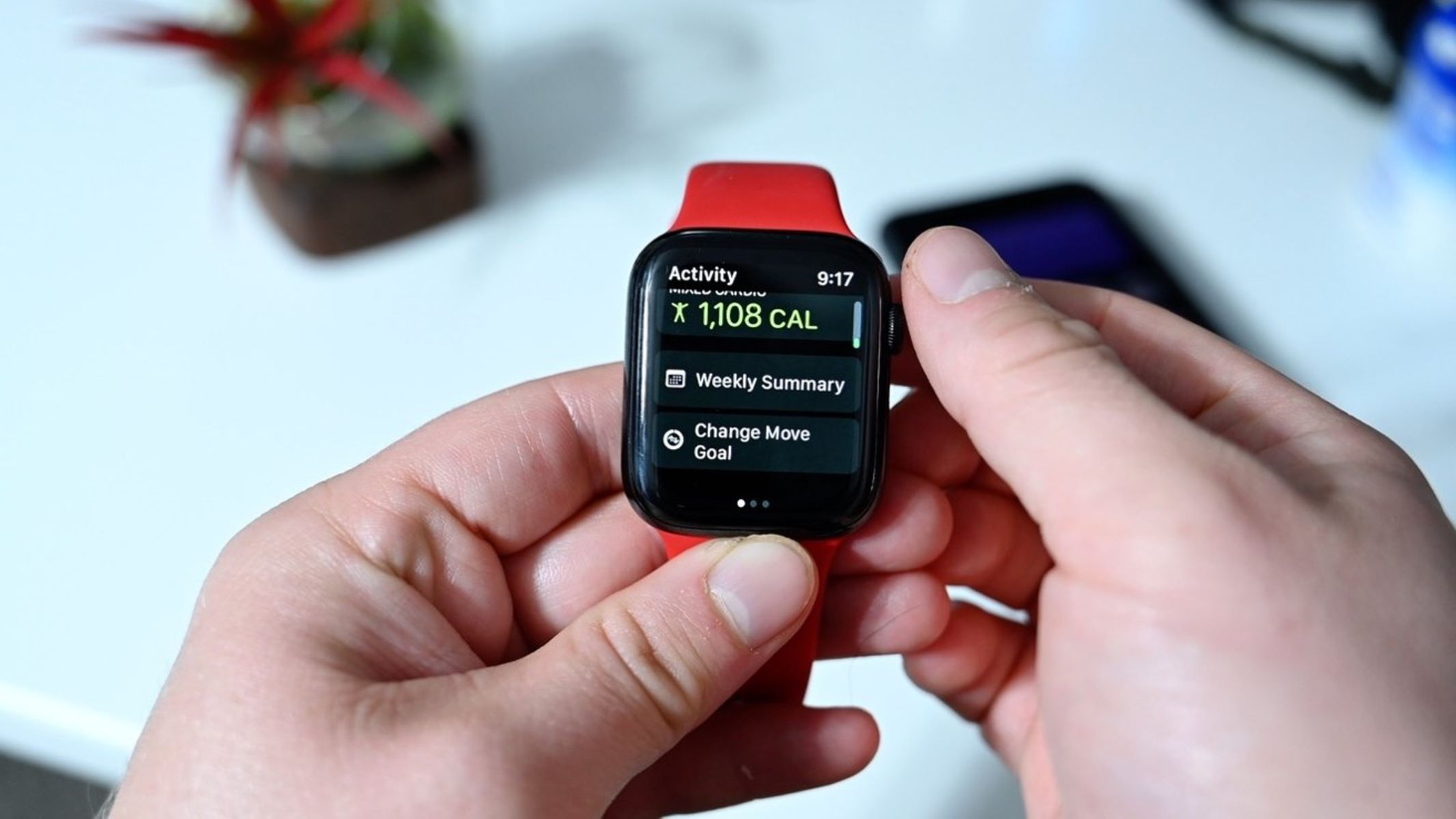Home>Misc>Featured>What Should My Heart Rate Be For Interval Training?


Featured
What Should My Heart Rate Be For Interval Training?
Modified: August 21, 2023
Discover what your heart rate should be for interval training and maximize your workout with our featured tips and guidelines.
Introduction
Welcome to the world of interval training! Whether you’re a seasoned fitness enthusiast or just starting out on your wellness journey, understanding the importance of heart rate during interval training is key to maximizing your results. In this article, we’ll explore the concept of interval training, its benefits, and how your heart rate plays a crucial role in achieving your fitness goals.
Interval training is a popular exercise technique that involves alternating periods of intense activity with rest or low-intensity recovery. This method challenges your body by pushing it to its limits, followed by brief recovery periods to allow for regeneration. The high-intensity bursts of exercise during intervals effectively raise your heart rate, making it a highly effective way to improve cardiovascular fitness, burn calories, and increase endurance.
The benefits of interval training extend far beyond its efficiency. Research has shown that this type of exercise can greatly enhance your aerobic capacity, making everyday activities feel easier and more manageable. Interval training has also been associated with improved insulin sensitivity, increased fat burning, and enhanced muscle strength.
Now, let’s dive into the role of heart rate in interval training. Your heart rate acts as a window into how hard your body is working during exercise. By monitoring and controlling your heart rate within specific zones, you can optimize the effectiveness of your interval training sessions and ensure that you are pushing yourself enough without overexertion.
What is Interval Training?
Interval training is a highly effective exercise strategy that involves alternating periods of high-intensity exercise with periods of rest or low-intensity activity. Unlike steady-state cardio exercises, such as jogging or steady cycling, interval training pushes your body to work at a higher intensity for shorter bursts of time.
The key principle of interval training is to challenge your body by pushing it to its limits, followed by brief recovery periods. This cyclical pattern of intensity and rest helps to improve cardiovascular fitness, burn calories, and increase endurance. The intense bursts of exercise during intervals force your heart rate to spike, leading to increased oxygen consumption and improved cardiovascular capacity.
The duration and intensity of the work and rest periods can vary depending on your fitness level and goals. For example, a common interval training approach is the 1:1 ratio, where you exercise at high intensity for a specific time period, followed by an equal duration of low-intensity recovery. Another popular method is known as High-Intensity Interval Training (HIIT), which involves very intense work periods with short recovery intervals.
Interval training can be done with various types of exercises, such as running, cycling, swimming, or even bodyweight exercises. The versatility of interval training allows you to customize your workouts based on your preferences and available resources.
One of the reasons interval training is so effective is due to something called excess post-exercise oxygen consumption (EPOC), or the “afterburn effect.” After an intense interval training session, your body continues to burn calories at an elevated rate as it works to replenish oxygen stores, repair muscles, and restore energy reserves. This means you continue to burn calories long after your workout has ended, making interval training a time-efficient way to improve fitness and burn fat.
Now that we’ve explored what interval training is, let’s dive deeper into the benefits it offers for your overall health and fitness goals.
Benefits of Interval Training
Interval training offers a wide range of benefits for both your physical and mental well-being. Let’s take a closer look at some of the advantages that make interval training a popular and effective exercise approach:
- Efficiency: Interval training allows you to get a highly effective workout in less time compared to traditional steady-state cardio exercises. The combination of high-intensity bursts and recovery periods maximizes calorie burn and cardiovascular fitness, making it an ideal option for those with busy schedules.
- Improved Cardiovascular Fitness: The intense bursts of exercise during interval training challenge your heart and cardiovascular system, leading to increased aerobic capacity. Over time, this improves your heart’s efficiency in pumping blood and delivering oxygen to working muscles, resulting in better endurance and stamina.
- Increased Caloric Burn: Interval training is known for its ability to rev up your metabolism and accelerate calorie burn. The intense intervals elevate your heart rate and stimulate the body to use more energy during and after the workout. This can aid in weight loss and fat burning.
- Enhanced Muscle Strength: The high-intensity intervals in interval training engage multiple muscle groups and help to build strength and power. This is especially true for exercises that involve resistance training or bodyweight movements. Regular interval training can lead to increased muscle mass and overall strength.
- Improved Insulin Sensitivity: Interval training has been shown to improve insulin sensitivity, which is crucial for maintaining healthy blood sugar levels. By incorporating interval training into your routine, you can enhance your body’s ability to regulate blood sugar and potentially reduce the risk of developing type 2 diabetes.
- Boosted Mental Well-being: Interval training releases endorphins, which are natural mood-boosting chemicals in the brain. Regular participation in interval training can help reduce stress, anxiety, and symptoms of depression, leading to improved mental well-being.
These are just a few of the many benefits that interval training has to offer. Whether you’re looking to improve cardiovascular fitness, burn calories, build strength, or simply add some variety to your workouts, interval training can provide numerous advantages for your overall health and fitness journey.
Importance of Heart Rate in Interval Training
Your heart rate serves as a vital indicator of your body’s response to exercise, and it plays a crucial role in the effectiveness of interval training. Monitoring and controlling your heart rate during interval training can help you optimize your workouts and ensure you are working at the appropriate intensity for your fitness goals.
During interval training, your heart rate is directly correlated to the intensity at which you are exercising. By reaching and maintaining specific target heart rate zones, you can ensure that you are challenging your cardiovascular system enough to elicit the desired training adaptations.
Knowing your maximum heart rate and different heart rate zones allows you to tailor your interval training sessions to suit your individual needs. For instance, if you aim to improve cardiovascular endurance, you may want to focus on training in higher heart rate zones for longer periods. On the other hand, if your goal is fat burning, targeting lower heart rate zones may be more effective.
Determining your maximum heart rate (MHR) is the first step in utilizing heart rate effectively during interval training. While there are various formulas for estimating MHR, the most common is to subtract your age from 220. However, it’s important to note that this is a general estimation, and individual variations can exist.
Once you know your MHR, you can calculate different heart rate zones, which represent different exercise intensities. The American Heart Association defines four main zones: moderate intensity, vigorous intensity, aerobic zone, and anaerobic zone. Understanding these zones can help you customize your interval training workouts to target specific objectives.
Monitoring your heart rate during interval training can be done using various methods. The most common way is by using fitness trackers or heart rate monitors, which provide real-time feedback on your heart rate. These devices can be worn around your wrist or chest, allowing you to track your heart rate throughout your workouts and adjust your intensity accordingly.
By paying attention to your heart rate during interval training, you can effectively optimize your workouts. For example, if you find that your heart rate is consistently too low during high-intensity intervals, you may need to increase the intensity to challenge your cardiovascular system further. On the other hand, if your heart rate is consistently too high and you struggle to recover during the rest periods, it may be a sign that you need to decrease the intensity to avoid overexertion.
Understanding and utilizing your heart rate during interval training empowers you to make informed decisions about your workout intensity, ensuring that you’re pushing yourself enough to elicit the desired adaptations while also avoiding unnecessary risks. It’s an essential tool for anyone looking to make the most out of their interval training sessions.
Determining Your Maximum Heart Rate
Determining your maximum heart rate (MHR) is a key step in understanding and utilizing your heart rate during interval training. While there are several formulas available to estimate MHR, it’s important to note that these calculations provide a general estimation and individual variations can exist.
The most commonly used formula is to subtract your age from 220. For example, if you are 35 years old, your estimated MHR would be 220 – 35 = 185 beats per minute (BPM). However, this calculation may not accurately reflect your true maximum heart rate due to factors such as genetics and fitness level.
A more accurate method for determining your MHR is through a maximum effort exercise test. This involves pushing yourself to your absolute limit during exercise, such as a vigorous run or cycling sprint, while monitoring and recording your heart rate. The highest heart rate achieved during this test is considered your individual MHR.
Another option is to use a submaximal exercise test, which estimates your MHR based on your heart rate response to exercise at a lower intensity. This test typically involves sustaining a steady pace of exercise, such as jogging or cycling, for a specific duration while monitoring your heart rate. While not as accurate as a maximum effort test, it can provide a reasonable estimation of your MHR.
If you prefer a less intense approach, there are also heart rate charts available based on age ranges. These charts provide average estimated heart rate ranges for different exercise intensities, including the desired maximum heart rate zone. While these charts can be a useful starting point, keep in mind that they are based on population averages and may not accurately represent your individual MHR.
Ultimately, the most accurate way to determine your MHR is through a maximum effort exercise test conducted under professional supervision. However, if you decide to estimate your MHR using formulas or charts, it’s essential to remember that these values are approximations and may not reflect your actual maximum heart rate.
Knowing your MHR is valuable for establishing heart rate training zones and optimizing your interval training sessions. However, it’s important to listen to your body and adjust your intensity based on how you feel during exercise. Use your MHR as a guideline, but always prioritize your comfort and safety during workouts.
Target Heart Rate Zones for Interval Training
Target heart rate zones are specific ranges of heart rate within which you should aim to exercise during interval training. These zones are based on a percentage of your maximum heart rate (MHR) and can help guide your intensity levels to achieve specific fitness goals. Here are the common target heart rate zones for interval training:
- Moderate Intensity Zone: This zone typically corresponds to around 50-70% of your MHR. It is characterized by a comfortable level of exertion where you can sustain the activity for a longer duration. This zone is ideal for building aerobic endurance and is often used as the recovery or rest period during interval training.
- Vigorous Intensity Zone: This zone corresponds to around 70-85% of your MHR. It involves a higher level of effort and challenges your cardiovascular system more intensely. Exercise in this zone will increase your heart rate significantly and improve your cardiovascular fitness. During interval training, this zone is typically targeted during the high-intensity intervals.
- Aerobic Zone: This zone corresponds to around 70-80% of your MHR. It is the sweet spot for improving your aerobic capacity, endurance, and fat-burning potential. Exercising in this zone allows you to increase your heart rate to a sustainable level while still being able to maintain the intensity over an extended period.
- Anaerobic Zone: This zone corresponds to around 80-90% or higher of your MHR. It represents a very high level of intensity where you are pushing your limits. Training in this zone is challenging and can only be sustained for short bursts. It helps improve anaerobic fitness, power, and speed.
These target heart rate zones are guidelines and can vary depending on your age, fitness level, and overall health. It’s essential to assess your individual capacity and adjust the zones accordingly. While some athletes and advanced exercisers may be able to sustain higher heart rates for longer durations, beginners and those with health concerns should start with lower-intensity zones.
During interval training, you will typically alternate between periods of high-intensity intervals in the vigorous or anaerobic zone and recovery intervals in the moderate intensity zone. This cyclic pattern challenges your cardiovascular system, improves your fitness, and maximizes the benefits of interval training.
Remember, it’s important to listen to your body and personalize the heart rate zones to suit your unique fitness level and goals. The target heart rate zones are general guidelines, but ultimately, the most important factor is that you are challenging yourself appropriately while maintaining a safe and comfortable exercise experience.
Monitoring Heart Rate during Interval Training
Monitoring your heart rate during interval training is crucial to ensure that you are exercising at the desired intensity and staying within your target heart rate zones. By keeping a close eye on your heart rate, you can gauge how hard your cardiovascular system is working and make necessary adjustments to optimize your workouts. Here are some effective methods for monitoring your heart rate during interval training:
- Heart Rate Monitors: Using a heart rate monitor is one of the most accurate and convenient ways to track your heart rate during interval training. These devices can be worn on your wrist or chest and provide real-time feedback on your heart rate. Some heart rate monitors can also connect to fitness apps or smartwatches, allowing you to easily track and analyze your heart rate data.
- Fitness Trackers: Many fitness trackers on the market today come equipped with built-in heart rate sensors. These devices, worn on the wrist, use optical sensors to measure your heart rate. While they may not be as precise as chest strap heart rate monitors, they can still provide a good estimate of your heart rate during interval training.
- Manual Pulse Checks: Another method for monitoring your heart rate is to manually check your pulse. You can do this by placing your index and middle fingers on your wrist (on the thumb side) or on the side of your neck and counting the beats for 15 seconds. Multiply the count by 4 to get your heart rate per minute. While this method may not be as accurate as a heart rate monitor, it can still give you a general idea of your heart rate during your intervals.
- Perceived Exertion Scale: Perceived exertion is a subjective method of gauging your intensity level based on how hard you feel you are working. The Borg Rating of Perceived Exertion (RPE) scale is a commonly used tool in which you rate your exertion level on a scale of 1-10. A rating of 1-2 is very light exertion, while a rating of 9-10 indicates maximum effort. By matching your perceived exertion with your heart rate, you can better understand how your body is responding to the intervals.
Regardless of the method you choose, it’s important to monitor your heart rate consistently throughout your interval training sessions. This allows you to assess whether you are hitting your target heart rate zones and adjust your intensity accordingly. If you find that your heart rate is consistently too low during high-intensity intervals, you may need to increase the intensity to challenge your cardiovascular system further. On the other hand, if your heart rate is consistently too high and you struggle to recover during the rest periods, it may indicate that you need to decrease the intensity to avoid overexertion and potential injury.
Regularly monitoring your heart rate during interval training empowers you to make informed decisions about your workout intensity, ensuring that you’re pushing yourself enough to elicit the desired adaptations while also considering your safety and well-being. It’s an essential practice to maximize the effectiveness of your interval training sessions.
Modifying Intensity based on Heart Rate
One of the key benefits of monitoring your heart rate during interval training is the ability to modify your intensity based on your heart rate response. By paying attention to your heart rate, you can make necessary adjustments to ensure you are working in the appropriate intensity range and achieving your desired training outcomes. Here are some strategies for modifying intensity based on heart rate:
- Increase Intensity: If you find that your heart rate is consistently below the target heart rate zone during high-intensity intervals, it may be an indication that you need to increase the intensity. Pushing yourself harder during these intervals can help raise your heart rate and challenge your cardiovascular system, leading to greater fitness gains. It’s important to do this gradually and listen to your body to avoid overexertion.
- Decrease Intensity: On the other hand, if your heart rate is consistently too high and you struggle to recover during the rest periods, it may be a sign that you need to decrease the intensity. High heart rates that are sustained for prolonged periods can lead to fatigue and potential injuries. Lowering the intensity will allow your heart rate to come down during the rest intervals and promote proper recovery, maintaining a safe and effective workout.
- Modify Work-to-Rest Ratios: Another way to modify intensity is by adjusting the work-to-rest ratios during interval training. If your heart rate remains too high during the recovery intervals, you may need to increase the duration of the rest periods. This provides more time for your heart rate to lower before the next high-intensity interval. Conversely, if your heart rate drops too low during the rest intervals, you may want to reduce the rest duration and increase the work time to keep your heart rate elevated.
- Listen to Your Body: While heart rate monitoring is a helpful tool, it’s important to listen to your body’s signals as well. Pay attention to how you feel during and after each interval. If you are extremely fatigued or experiencing excessive discomfort, it may be a sign that you need to modify the intensity or take a break. Remember to prioritize your safety and well-being above all else.
It’s important to note that everyone’s heart rate response to exercise is unique, and factors such as fitness level, age, and overall health can influence heart rate variability. Therefore, it’s essential to individualize your approach to intensity modification based on your own capabilities and goals.
By modifying your intensity based on your heart rate, you can optimize the effectiveness of your interval training sessions. Whether you need to increase the challenge or dial it down, maintaining a balance between pushing yourself and listening to your body will help you achieve the desired training outcomes and minimize the risk of overexertion or injury.
Tips for Effective Interval Training
Interval training is a highly effective exercise method, but to reap its full benefits, it’s important to approach it with a well-planned and informed strategy. Here are some tips to make your interval training sessions more effective and enjoyable:
- Set Clear Goals: Before starting your interval training program, define your goals. This could be improving cardiovascular fitness, increasing endurance, losing weight, or any other specific objective. Having clear goals in mind will help you structure your interval training workouts accordingly.
- Warm-Up Properly: Prior to every interval training session, make sure to warm up adequately. A dynamic warm-up routine that includes mobility exercises and light aerobic activity prepares your body for the upcoming intensity and reduces the risk of injury.
- Start Slow and Progress Gradually: If you’re new to interval training, start with shorter intervals and longer recovery periods. As your fitness improves, gradually increase the intensity and decrease the recovery time. Progressing too quickly can lead to burnout or overtraining, so listen to your body and make adjustments accordingly.
- Diversify your Workouts: Variety is key to preventing boredom and keeping your body challenged. Incorporate different forms of cardiovascular exercise into your interval training routine. This could include running, cycling, swimming, rowing, or even high-intensity bodyweight exercises. Switching up the exercises helps target different muscle groups and keeps your training sessions interesting.
- Use Proper Form: Maintaining proper form during interval training is essential for safety and optimal results. Focus on technique to ensure you are performing each exercise with correct posture and alignment. If you are unsure about proper form, seek guidance from a qualified fitness professional.
- Prioritize Recovery: Rest and recovery are just as important as the high-intensity intervals. Allow adequate time between sessions for your body to recover and adapt to the training stimulus. This will help prevent injury, reduce the risk of burnout, and optimize your performance in subsequent workouts.
- Stay Hydrated: Hydration is vital during interval training to maintain optimal performance and prevent dehydration. Drink water before, during, and after your workouts, especially if you are exercising in a hot or humid environment.
- Listen to Your Body: Pay attention to your body’s signals during your interval training sessions. If you feel excessive fatigue, pain, or dizziness, it’s important to stop and evaluate your condition. Push yourself, but always prioritize your safety and well-being.
- Track Your Progress: Keep a record of your workouts, including the duration, intensity, and any modifications you made. Tracking your progress allows you to see improvements over time and keeps you motivated to reach your goals.
Remember, interval training should be challenging but enjoyable. Finding the right balance between pushing yourself and listening to your body will help you make the most out of your interval training sessions and achieve the results you desire.
Conclusion
Interval training is a highly effective exercise method that can help you improve cardiovascular fitness, burn calories, and increase endurance. By incorporating intervals of high-intensity exercise with periods of recovery, you can push your body to its limits and achieve remarkable results. Understanding the importance of heart rate in interval training is key to optimizing your workouts and reaching your fitness goals.
Your heart rate serves as a valuable indicator of your body’s response to exercise. Monitoring and controlling your heart rate during interval training allows you to work within specific target heart rate zones, ensuring that you are challenging your cardiovascular system appropriately. Whether you’re aiming to improve aerobic capacity, burn fat, or enhance muscle strength, utilizing heart rate zones helps you personalize your workouts for desired outcomes.
Determining your maximum heart rate and calculating different target heart rate zones based on percentages of your MHR provide guidelines for achieving specific training objectives. Monitoring your heart rate during interval training can be done using heart rate monitors, fitness trackers, or by manually checking your pulse. Regularly assessing your heart rate allows you to modify intensity, adjust work-to-rest ratios, and personalize your workouts based on your body’s unique response.
To maximize the effectiveness of your interval training sessions, it’s important to set clear goals, warm up properly, progress gradually, diversify your workouts, use proper form, prioritize recovery, stay hydrated, listen to your body, and track your progress. By following these tips, you can create a well-rounded and effective interval training routine tailored to your needs.
Interval training requires effort, commitment, and the willingness to push yourself outside your comfort zone. Remember to listen to your body and make adjustments as needed. While interval training can be challenging, it should also be enjoyable. Embrace the power of interval training, harness the benefits of heart rate monitoring, and embark on a journey towards improved fitness and well-being.









